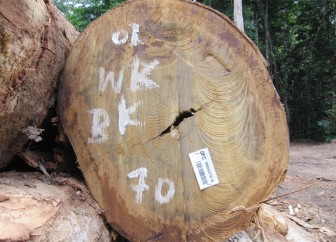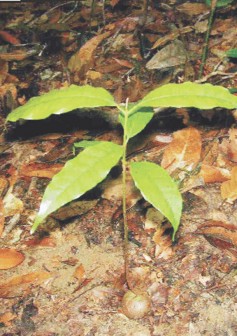Greenheart is found only in Guyana and is one of the most important timber species. The densest stands of Greenheart are thought to be found in the Bartica Triangle region.
High densities of Greenheart have traditionally been considered a unique forest type though in reality they represent a locally dominant component of mixed wet forest. Despite this earlier overemphasis, Greenheart is typically found to be associated with a mixed forest tree community which occurs on well-drained brown sand and lateritic slopes in Guyana, particularly in central Guyana. It is highly sensitive to high water tables, particularly flooding, and its presence would indicate that that area is rarely, if ever, subject to high ground water.
The production of Greenheart is one of the oldest activities in the forest-based sector of Guyana’s economy. Until 1997, Greenheart was the largest contributor to gross and export revenue from timber in the country. Today, it remains one of the most merchantable timber products that Guyana has to offer and the prospects for future markets look promising. Its use for coastal defence works, revetments, pierage, especially in maritime applications, is world renowned. Other structural uses, such as oil platform rigging and external decking combined with small piecework for archery bows, billiard cues, musical instruments, window framing and exterior coving, among others, provide excellent prospects for market diversification and high-end use efficiency.
Greenheart has been selectively logged over much of its geographic range. Greenheart stands in the Iwokrama Forest are largely unexploited and could make a substantial contribution to the in situ conservation of Greenheart genetic diversity.

(Photo by R Thomas)
Rain forests are rich in biodiversity and are home to many different plants and animals as well as indigenous communities. Humans, even those who don’t live in the rain forest, rely on it for resources such as building materials (wood and lianas), medicine and fruits.
Rain forests also provide essential environmental services for life on earth; they create soil as well as prevent soil erosion, produce oxygen through photosynthesis, maintain clean water systems, and are a key defence against climate change.
The Iwokrama Rain Forest is 371,000 hectares, located in the heart of Guyana. Our mission is to develop strategies for conservation and sustainable development for local people in Guyana and the world at large. We are involved in timber, tourism and training. Come and visit us in the rain forest or at http://www .iwokrama.org.

(Photo by R Thomas)




